Water Retention vs. Weight Loss: You Can Lose Fat, But Not Weight?

If you want to know how water retention can prevent weight loss and even make you look fatter (and what to do about it), you want to read this article.
here are many ways you can screw up a well-designed diet.
For example…
You can accidentally eat more calories than you should.
You can move your body too little.
You can over-estimate the amount of energy you burn every day.
You can set yourself back with gluttonous “cheat meals.”
These common diet mistakes are elementary.
You run through a quick checklist, realize where you’re leaking water, plug the hole, and voila, you’re back on track.
What isn’t so elementary is the inexplicable weight loss plateau.
You know…when your macros are on point…you’re doing plenty of exercise…you’re accurately estimating energy expenditure…and you’re not bingeing yourself back to square zero every Saturday…
…and you’re still seeing the same dismal sight in the mirror and on the scale every week.
Well, if you’re stuck in such a predicament, don’t do what most people do: exercise more and eat less. It’ll just make things worse.
You see, the culprit is likely water retention , and if you don’t know how to deal with it properly, it can fuel an emotional firestorm of anger and frustration.
Well, I don’t want that to happen to you, so I wrote this article.
And by the end of this article, you’re going to know what causes water retention, why so many people trying to lose weight struggle with it, and how to bring everything back to normal, including your weight loss.
So let’s start at the top.
When a Weight Loss Plateau isn’t a Fat Loss Plateau
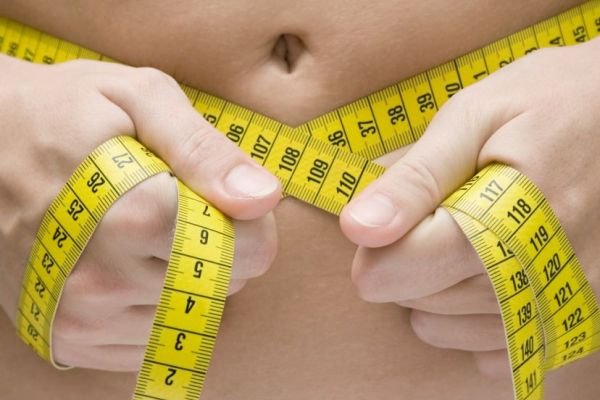
In a perfect world, we would lose weight in a neat, orderly manner.
We would stick to our workouts and meal plans like good little boys and girls and would wake up a little lighter and leaner every day.
The weeks would breeze by and before we knew it, we’d be the proud owners of a shiny new set of six-pack abs.
And people say dieting is hard. Hmph!
Well, that’s the dream at least.
But then we wake up and have to accept that in the real world, weight loss can be quite erratic.
You might lose a pound or two per week for several weeks and then, for no good reason, see no change for a few weeks, as if your body suddenly forgot how to burn fat.
Then, just before you get desperate enough to dabble in gluten-free or Paleo voodoo (or literally voodoo), you lose four pounds overnight.
WTF is going on?
How can you maintain what you know is a calorie deficit only to have nothing change for extended periods of time, and then, just as mysteriously, see a dramatic shift in the right direction?
Well, the answer is simple.
The fat you lose through proper dieting can be obscured–both on the scale and in the mirror–by additional water that your body is holding on to.
Many people have heard this but don’t realize how significant the effects can be. It’s not uncommon to lose upward of 3 to 4 pounds of fat over the course of 3 to 4 weeks without even knowing it due to increased water retention.
The fat loss only becomes visible when the excess fluid is flushed out of the body, creating the illusion of extreme fat loss over very short periods.
Why does your body hold onto more water when you diet though? And what can you do about it?
Let’s find out.
What a World War II Starvation Experiment Can Teach Us About Water Retention
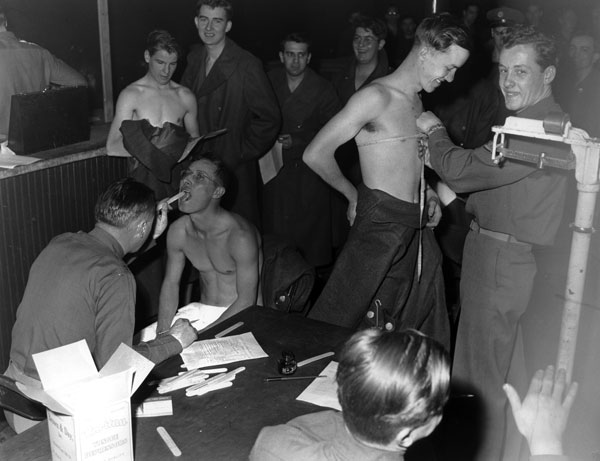
During World War II, Dr. Ancel Keys led a groundbreaking scientific study wherein 36 men willingly submitted themselves to a semi-starvation diet of about 1,500 calories per day for 6 months and hours of hard labor every day.
This become known as the “Minnesota Starvation Experiment” and its purpose was to learn about the physiology and psychology of starvation, and to work out a proper regimen for helping starved war prisoners back to normal diets and metabolic health.
One of the many interesting findings that came from this study was that weight loss progressed in a nice, linear fashion in the beginning. Men lost about 2 pounds per week, every week. After some time, though, it became erratic and unpredictable.
Body weight would remain stagnant for several weeks followed by overnight “bursts” of large amounts of weight loss (3+ pounds).
It’s physically impossible to burn several pounds of fat overnight, so how is that possible?
Well, the scientists looked into the phenomenon further and found the answer: water retention.
What was happening is the men were steadily losing fat even when their weight wasn’t changing because as they lost more fat, they held more water.
This only became obvious once the excess water was expelled, which gave the appearance of very rapid weight loss.
Bodybuilders are very familiar with this phenomenon. They call it the “whoosh effect.”
I want to repeat something:
The calorie deficit did systematically reduce body fat levels, but the reductions in total body weight were often counter-balanced by increases in water retention.
The reason I want to call attention to this is many “gurus” like to claim that this experiment actually “proves” that calorie-based dieting “doesn’t work” because subjects weren’t losing weight despite being in a calorie deficit.
Bollocks.
Now, what triggered these “whooshes” of weight loss, you’re wondering?
Sometimes they just occurred randomly, but scientists found that reliable trigger was a dramatic increase in caloric intake.
For instance, a 2,300-calorie meal was served to celebrate the half-way mark of the experiment, and researchers noted that many of the men woke up several times to pee that night and, in the morning, were several pounds lighter than the day before.
If you’ve ever dieted down to a super-lean level (7% body fat and below for men, 16% and below for women), you’ve probably experienced something similar after doing a refeed day.
Why is this, though? What’s happening physiologically?
The answer has to do with a hormone called cortisol, which your body produces in response to stress.
Research shows that a prolonged calorie deficit dramatically raises cortisol levels. This causes quite a few unwanted effects in the body including increased water retention.
And that’s exactly what happened to the Minnesota Experiment patients. The combination of little food and lot of physical activity spiked cortisol levels, which spiked water retention.
(This is why many people subjecting themselves to starvation diets and large amounts of exercise tend to struggle the most with water retention as well.)
Scientists found that the feast that triggered the “whoosh” in the experiment’s subjects dramatically lowered their cortisol levels, which explains the large expulsions of water.
Again, this is why a refeed day will often produce a weight loss “whoosh.” This is also why weight loss will often continue during a period of reverse dieting.
How to Lose Water Weight
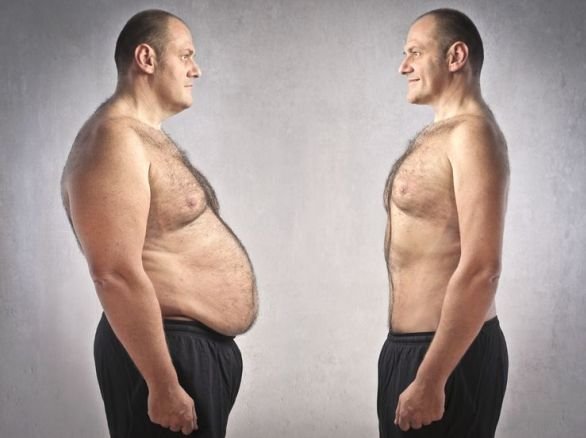
If you’ve made it this far, you’ve probably extrapolated a few tips for reducing water retention:
Don’t starve yourself.
Don’t do hours and hours of cardio every week.
Eat large amounts of food occasionally.
And it turns out that those are actually effective strategies for shedding excess water because they reduce cortisol levels.
Let’s look a bit closer at each as well as a few other ways to reduce water retention.
Don’t Be Too Aggressive with Your Calorie Deficit

If you want to rapidly lose fat and not muscle, you want to be aggressive with your calorie deficit…but not reckless.
There are several reasons for this and one of them is eating too little leads to large increases in fluid retention.
To avoid this, maintain a 20 to 25% calorie deficit when dieting to lose weight.
Don’t Do Too Much Exercise
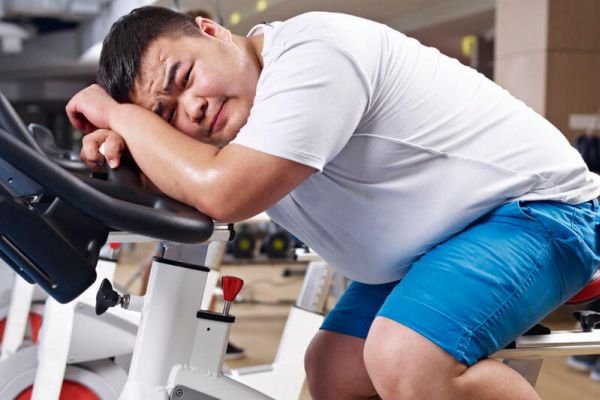
Yes, this is a weight loss article that’s telling you to eat more and move less, because if you’re trying to lose weight but are holding a lot of water, you can probably benefit from both.
Specifically, I recommend no more than 3 to 5 hours of weightlifting and 1 to 2 hours of cardio per week when cutting.
This is enough exercise to burn large amounts of fat while preserving muscle and minimizing water retention.
Oh and don’t forget your deload weeks!

Don’t you love me for this one?
A large increase in caloric intake can trigger a “whoosh” of water weight, which is one of the reasons I recommend regular “cheat meals” when dieting.
That said, you need to know how to “cheat” correctly or it can actually hinder your progress. Read this article to learn more.
You Probably Need to Adjust Your Sodium and Potassium Intake
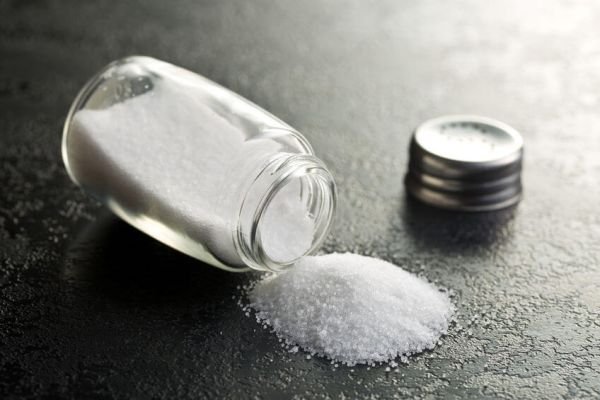
We haven’t talked yet about how sodium and potassium intake affects fluid levels in the body, but should.
Sodium is a mineral that brings water into cells, which is why eating large amounts of it can cause a large increase in water retention (or “bloating,” as most people see it).
You’ve probably seen this the morning after eating a large, salty restaurant meal.
This is also why when you restrict sodium intake, water retention decreases.
Potassium is another mineral that has the opposite effect on cellular fluid levels. Whereas sodium sucks fluid in, potassium pumps it out.
This is why research shows that restricting potassium intake can increase fluid retention.
Now, if you’re like most people, your diet is probably very high in sodium and quite low in potassium.
If you want to check, head over to Calorie King and start adding up. And don’t forget to add in guesstimates for how much salt you’ve been using as well (salt has about 2.3 grams of sodium per teaspoon).
I’ll bet money that your sodium intake is at least 50% higher than the USDA’s recommendation of about 2.3 grams per day (and 1.5 grams for African Americans, individuals with hypertension, diabetes, or chronic kidney disease and individuals ages 51 and older).
And I’ll double down that your potassium is at least 50% lower than the Institute of Medicine’s recommendation of about 4.7 grams per day.
(And no, you’re not alone here–insufficient potassium intake is one of the most common nutrient deficiencies in Western diets.)
This mineral imbalance contributes to water retention, but it’s a lot worse than that.
A study conducted by scientists from the Center for Disease Control and Harvard University found that people with the highest ratio of sodium to potassium were twice as likely to die of a heart attack and had a 50% higher risk of death from any cause than people with the lowest ratio.
The bottom line is people with diets very high in sodium and very low in potassium are playing with fire.
(I should note, however, that people that sweat regularly may need more sodium to offset losses through sweating. I personally eat around 3.5 to 4 grams per day.)
So, here are some good rules of thumb for keeping your sodium intake under control:
Look at the sodium content of canned or pre-packaged foods.
They’re often loaded with sodium as a preservative.
Avoid deli meat.
For the same reason.
Cut back on salt and certain seasonings.
Use salt sparingly and if needed, use a potassium-based salt substitute.
Watch out for mixed seasonings as well, like chili or pizza seasoning. They can contain quite a bit of sodium.
Watch out for sauces and salad dressings.
Many are very high in sodium.
Cheese can be a problem too.
For example, just one ounce of American cheese has nearly 500 milligrams of sodium.
The best way to raise your potassium intake is to include potassium-rich foods in your meal plans, such as…
Beans
Dark leafy greens
Banana
Potato
Squash
Yogurt
Salmon
Avocado
Mushrooms
And if you’re frowning at having to plan/track yet another thing in your diet, don’t worry–you don’t have to track sodium and potassium intake forever.
Instead, you want to plan/track at first to see what works and what doesn’t and then just use common sense in maintaining good habits going forward.
Yes, that means your sodium and potassium intake is going to fluctuate some and occasionally spike plummet, and that’s fine.
So long as your intake is stably in the right range most of the time, and you go back to normal right after occasional spikes, you’ll be fine.
Take Time to Chill

You can reduce cortisol levels by simply taking some time each day to do relaxing things like…
Listening to some good music
Drinking some tea
Taking a nap
Getting a massage
If you want some more strategies for relaxing your mind and body, check out this article.
Get Enough Sleep
High-quality sleep is getting scarcer and scarcer these days thanks to ever-increasing obesity rates, work hours, TV watching, video game playing, and other distractions that keep us up at night.
Well, one of the many reasons to get enough sleep is inadequate rest increases cortisol levels, which, as you know, increases water retention.
Try to get 7-8 hours of sleep per night, and check out this article if you need help getting there.
Drink More Water
The Institute of Medicine recommends that we get about a gallon of water per day, and while we do get a fair amount from food, this requires drinking at least a few liters of water every day.
Personally I drink about 1 to 1.5 gallons per day because I lose a fair amount of water through my daily exercise and living in Florida (sweating).
The Bottom Line on Water Retention and Weight Loss

If you’ve been watching your calorie intake, following a sensible workout program, popping weight loss pills and powders, and you’re mysteriously not losing weight…
…then you’re probably dealing with water retention issues.
Don’t try to fight fire with fire by further reducing caloric intake and increasing physical output. It’s just going to make things worse.
Instead, just follow the advice in this article and you’ll be smiling at the scale and mirror again in no time.
What’s your take on water retention and weight loss? Have anything else to share? Let me know in the comments below!
Leave out the word “weight.”
Hi. I am a volunteer bot for @resteembot that upvoted you.
Your post was chosen at random, as part of the advertisment campaign for @resteembot.
@resteembot is meant to help minnows get noticed by re-steeming their posts
Even better: If your reputation is lower than 28 re-steeming only costs 0.001 SBD!
If you want to learn more - read the introduction post of @resteembot.
If you want help spread the word - read the advertisment program post.
Hi friend, very good !!!!!
You would help me with a vote in my post., Thanks !!! ;)
Congratulations @cryptovoice! You have completed some achievement on Steemit and have been rewarded with new badge(s) :
Click on any badge to view your own Board of Honor on SteemitBoard.
For more information about SteemitBoard, click here
If you no longer want to receive notifications, reply to this comment with the word
STOPNice post @cryptovoice ,,,
I think you will be successful in the future! good luck!